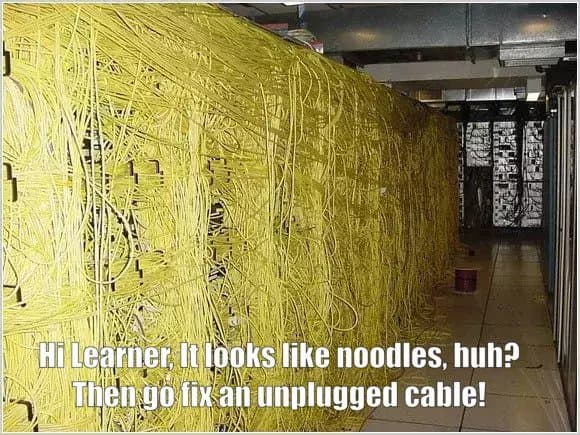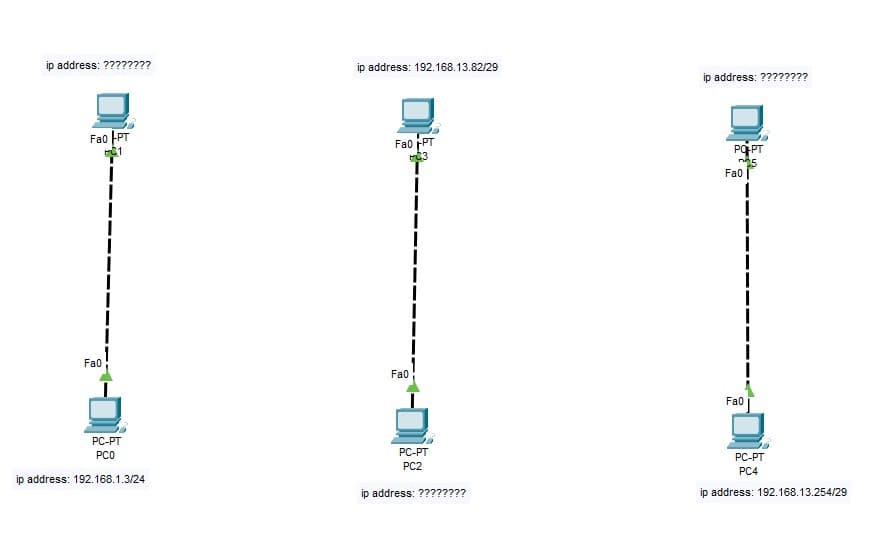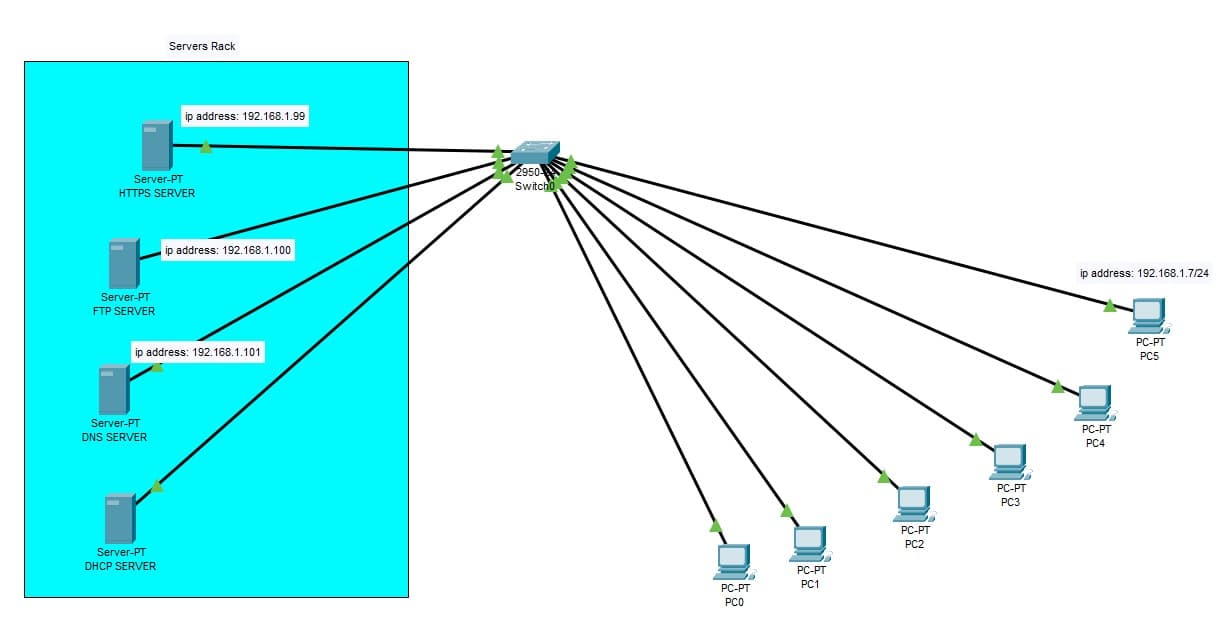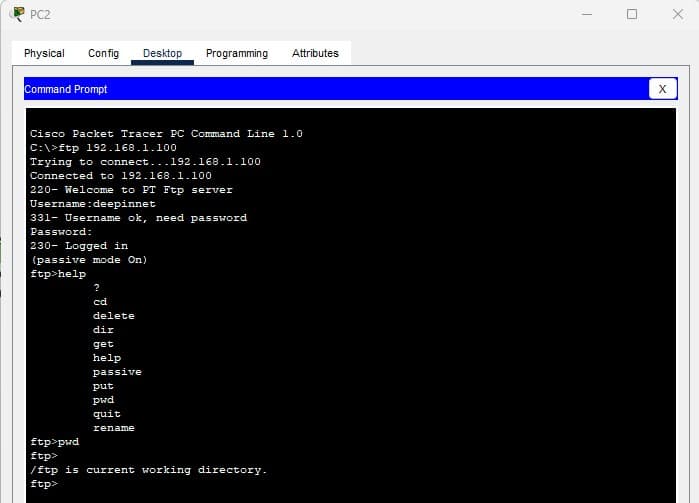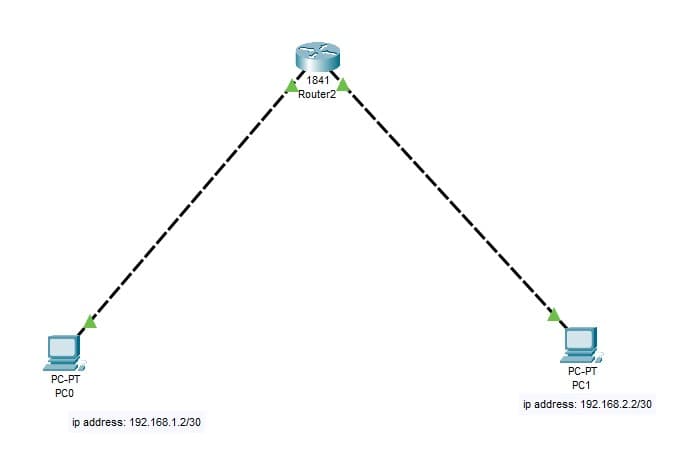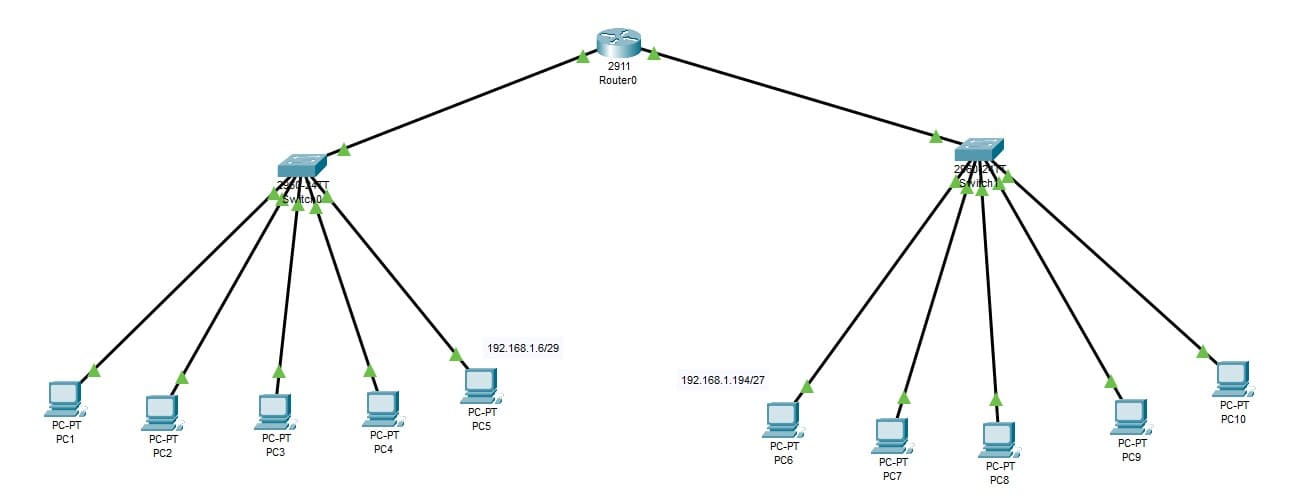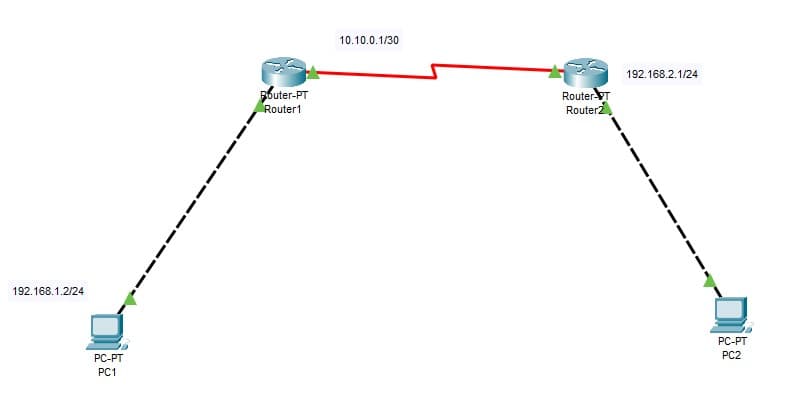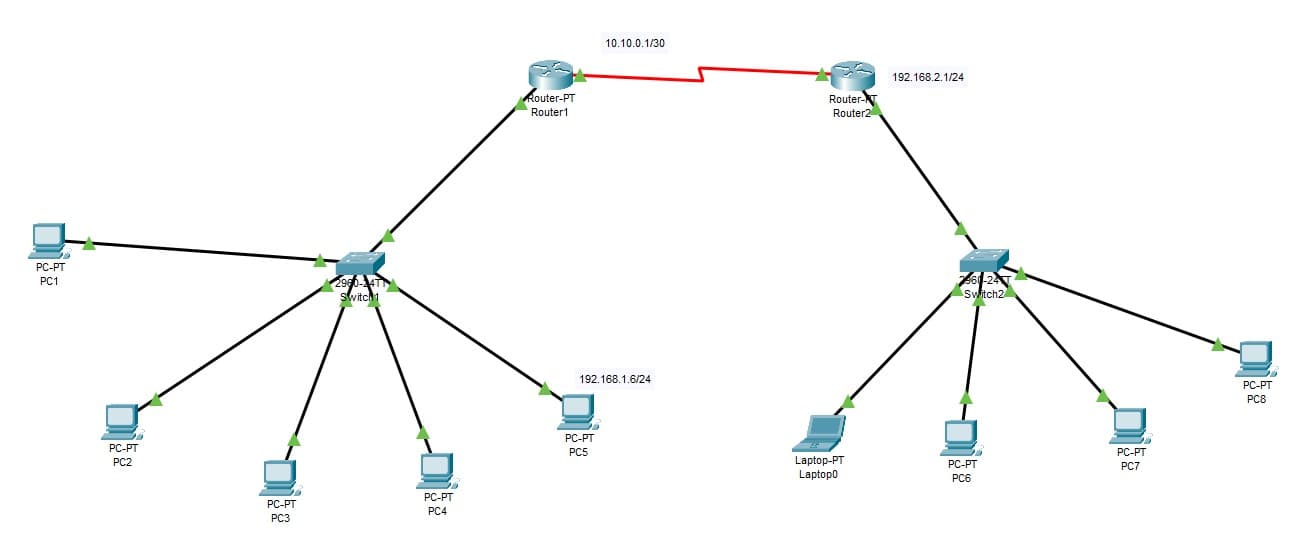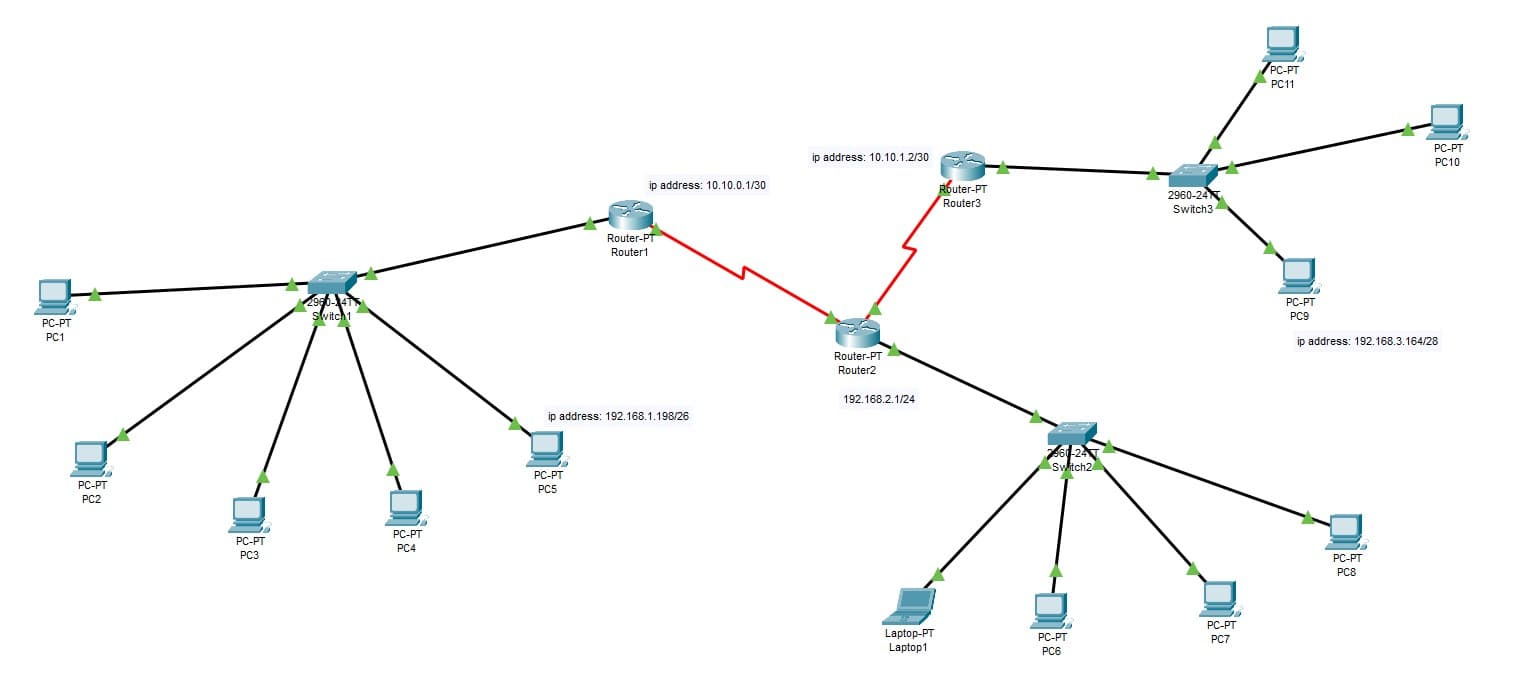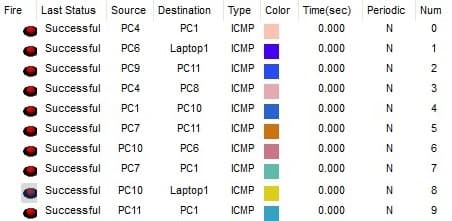|
|
12 months ago | |
|---|---|---|
| .. | ||
| audit | 12 months ago | |
| pictures | 1 year ago | |
| README.md | 12 months ago | |
README.md
deep-in-net
Objectives
This project will be divided in 8 exercises where we will introduce you to the Cisco Packet Tracer, a valuable networking tool. Additionally, as a cloud and DevOps student, you will gain insight into key networking concepts as follows:
-
Discovering and dealing with networking devices, this is fundamental in order to understand how networks are built and maintained. -
Understanding and using important services and protocols, this is also critical as they provide the framework for communication and data transfer between devices on a network. -
The OSI Modelis a conceptual framework that describes the different layers of network communication and is an essential concept to master when learning about computer networks. -
Discover some important networking commands in Linux, knowing them is valuable, as Linux is a widely used operating system in networking and server environments. These commands are used to configure and troubleshoot network settings and interfaces, making them essential tools for network administrators and engineers.
Tips
- It is recommended not to rely on IP Subnet Calculator tools.
- To configure the devices, utilize the command-line interface (CLI) available in the
Cisco Packet Tracer. - Test connectivity for different protocols using appropriate commands.
- Use command-line debugging techniques to troubleshoot communication issues instead of relying on graphical user interface (GUI) tools.
Networking plays a critical role in various IT specialties, and is particularly essential for cloud and DevOps engineering. Be curious and never stop searching!
Guideline
You must respect the defined netmask and IP address for each network!
Instructions
Cisco Packet Tracer:
The Cisco Packet Tracer is a powerful network simulation tool used for teaching and learning complex networking concepts. It allows users to design, configure, and troubleshoot network setups, without the need for physical networking equipment. The tool can simulate a wide range of network devices, including routers, switches, servers, and endpoints, and enables users to create, configure, and connect network topologies in a virtual environment.
You have to install Cisco Packet Tracer on your machine or VM:
Take your time to discover it!
You will need it in the audit.
Exercise 1:
In your Cisco PacketTracer create this network:
PC0can communicate withPC1.PC2can communicate withPC3.PC4can communicate withPC5.
Knowledge:
- What is RJ-45 cable?
- Understand what is the difference between straight through and crossover RJ-45 cables.
Exercise 2:
In your Cisco PacketTracer create this network:
- All computers connected to the Switch must be connected.
- All computers connected to the Hub must be connected.
Knowledge:
- Understand the function of a
switchand ahub, how they operate and their role in networking. - Differentiate between the
switchand thehub. - Identify the
OSI model layerthat theswitchandhuboperate on.
Exercise 3:
In your Cisco PacketTracer create this network:
- Static IP addresses are mandatory for all servers.
- Services provided by each server should be limited to their designated purpose.
- The
DHCP servermust be responsible for assigning IP addresses to all PCs. - The
HTTPS servermust display a hello message andHTTPmust be disabled.
- You must create a user account with the name "deepinnet" and provide
RWDNLaccess on yourFTP server.
-
Configure the following records in your
DNS server:- Map "deep-in-net.local" to IP address 192.168.1.99.
- Map "deep-in-net.com" to "deep-in-net.local".
deep-in-net.local > 192.168.1.99
deep-in-net.com > deep-in-net.local
- Ensure that "https://deep-in-net.com" redirects to your
HTTPS server.
Knowledge:
- Define a
serverand its purpose in networking. - Explain
DHCPand how it operates in a network. - Define
DNSand its role in network communication. - Understand the purpose of
HTTPand how it is used in networking. - Explain
HTTPSand how it is different fromHTTP. - Understand the purpose of
FTPand how it operates in network communication. - Define
TCPandUDPcommunication and differentiate between them. - Identify the
OSI model layerwhereTCPandUDPoperate. - Define a
portin networking and its function. - Identify the
portandOSI model layerfor each protocol used. - Understand the different types of
DNSrecords.
Exercise 4:
In your Cisco PacketTracer create this network:
- Both PCs must communicate with each other.
Knowledge:
- What is a
routerand what is its role? - Differentiate between the switch and the router.
- Identify the
OSI model layerwhere arouteroperates. - Understand the term "default gateway".
Exercise 5:
In your Cisco PacketTracer create this network:
- All devices connected to the same switch must be able to communicate with each other.
- All devices in
subnet 1can communicate with all devices insubnet 2. - All devices in
subnet 2can communicate with all devices insubnet 1.
Exercise 6:
In your Cisco PacketTracer create this network:
- The PC in
subnet 1can communicate with The PC insubnet 2. - The PC in
subnet 2can communicate with The PC insubnet 1.
Knowledge:
- What is a routing table and explain its role in routing network traffic.
Exercise 7:
In your Cisco PacketTracer create this network:
- All devices connected to the same
switchmust be able to communicate with each other. - All devices in
subnet 1can communicate with all devices insubnet 2. - All devices in
subnet 2can communicate with all devices insubnet 1.
Exercise 8:
In your Cisco PacketTracer create this network:
- All devices connected to the same switch must be able to communicate with each other.
- All devices in
subnet 1can communicate with all devices insubnet 2. - All devices in
subnet 1can communicate with all devices insubnet 3. - All devices in
subnet 2can communicate with all devices insubnet 1. - All devices in
subnet 2can communicate with all devices insubnet 3. - All devices in
subnet 3can communicate with all devices insubnet 1. - All devices in
subnet 3can communicate with all devices insubnet 2.
Bonus
If you complete the mandatory part successfully and you still have free time, you can implement anything that you feel deserves to be a bonus.
Challenge yourself!
Documentation
Create a README.md clarification of all the knowledge you have learned and the steps you passed to create the network architectures, thorough descriptions of components, and an explanation of the network architectures, presented clearly and concisely. Ensure it contains all the necessary information about the architectures (devices, addresses, subnets, ...). This file must be submitted as part of the solution for the project.
Submission and audit
You must save your Exercises solutions as "ptk" files, and then push them to your repository with your documentation file.
Your repository must look like this:
user:~/deep-in-net$ ls
ex01.pkt
ex02.pkt
ex03.pkt
ex04.pkt
ex05.pkt
ex06.pkt
ex07.pkt
ex08.pkt
bonus.pkt
README.md
user:~/deep-in-net$
In the audit you must answer a group of questions, and recreate a network in the
cisco packet tracer, be prepared. You must also explain any calculations that you have made without the use of tools! If you fail to do any of this, then your project will be considered a failed project! so take your time to learn and practice.
